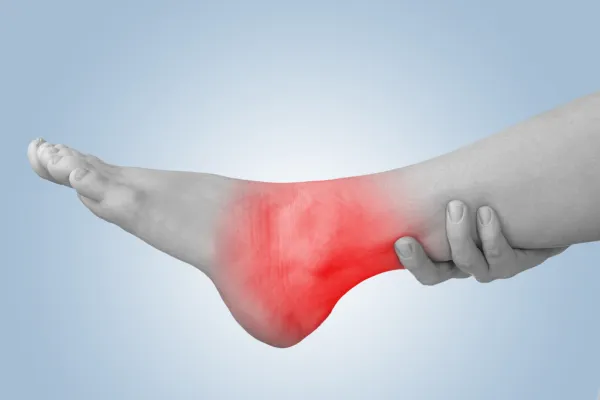
Twisted, Swollen, or Achy? How to Tell If Your Ankle Pain Needs Attention
Have you twisted your ankle stepping off a curb or noticed a dull ache that just won’t go away? Ankle pain is common, and while some cases are harmless and heal with rest, others are a sign that you should see a podiatrist. In this post, we’ll explore how to tell the difference—and what steps to take next.
When Pain Follows a Twist or Injury
If you remember twisting or rolling your ankle recently, it’s likely a sprain. This happens when the ligaments are stretched or slightly torn. Symptoms often include pain, swelling, bruising, and difficulty putting weight on the foot.
In many cases, resting the ankle, applying ice, using a bandage, and elevating it can reduce symptoms within a week or two. But if the pain is severe, you can’t stand or walk on it, or the swelling doesn’t go down after a few days, it’s time to seek help. A podiatrist in Dublin 9 or your local area can check for more serious injuries like fractures or ligament damage.
Ongoing Ache or Pain That Builds Slowly
Ankle pain isn’t always caused by a sudden injury. Sometimes it creeps in gradually, especially if you’ve been on your feet more than usual or started a new exercise routine. This type of pain is often linked to overuse or strain on the tendons and joints.
You might notice a dull ache after walking, standing, or wearing unsupportive shoes. In the morning, your ankle may feel stiff but loosens up as the day goes on. This could be a sign of tendinitis or early arthritis. The good news is, these issues can often be managed with proper footwear, stretches, and a short period of rest. If the discomfort keeps returning, a visit to a foot clinic in Dublin 4 can help identify the cause and prevent it from getting worse.
What Swelling Can Tell You
Swelling is your body’s natural response to injury or inflammation. If your ankle is puffy or feels warm to the touch, pay attention. Localised swelling—just over a specific spot—can point to an injury, like a sprain or tendon issue. More general swelling that affects the whole ankle joint may suggest arthritis or fluid buildup.
If swelling comes with redness, heat, or fever, it could signal an infection or something more serious like gout. These symptoms should never be ignored, and you should contact a healthcare provider or podiatrist straight away.
Signs It’s Time to See a Specialist
While mild ankle pain can often be treated at home, there are times when it’s best to get a professional opinion. Make an appointment if:
You can’t put weight on your ankle or walk normally
The pain doesn’t improve after a week of rest and care
You feel a sense of instability, like your ankle could “give way”
You experience frequent flare-ups or chronic discomfort
There’s visible swelling that doesn’t go down, or signs of infection
Podiatrists in Dublin 9 or foot clinics in Dublin 4 are equipped to diagnose the problem, arrange imaging if needed, and recommend effective treatment—whether that’s rest, supports, exercises, or in some cases, custom orthotics.
At-Home Care Tips for Mild Ankle Pain
If your ankle is only mildly sore or swollen, try the following:
Rest and avoid putting too much pressure on it
Apply ice packs for 15–20 minutes at a time during the first two days
Use a supportive bandage or compression sleeve
Elevate your ankle to help reduce swelling
Start gentle movements after a couple of days to keep the joint flexible
Keep an eye on how things progress. If the pain or swelling sticks around, it’s worth getting checked out—early care can prevent long-term problems.
Conclusion
Ankle pain can range from minor and temporary to a sign of something more serious. Whether it came on suddenly after a twist, or developed gradually over time, your symptoms offer important clues. If rest and home care aren’t helping, or if you notice swelling, instability, or severe pain, don’t ignore it.
Whether you’re in Dublin 4 or Dublin 9, a podiatrist can help you get back on your feet safely and confidently.




